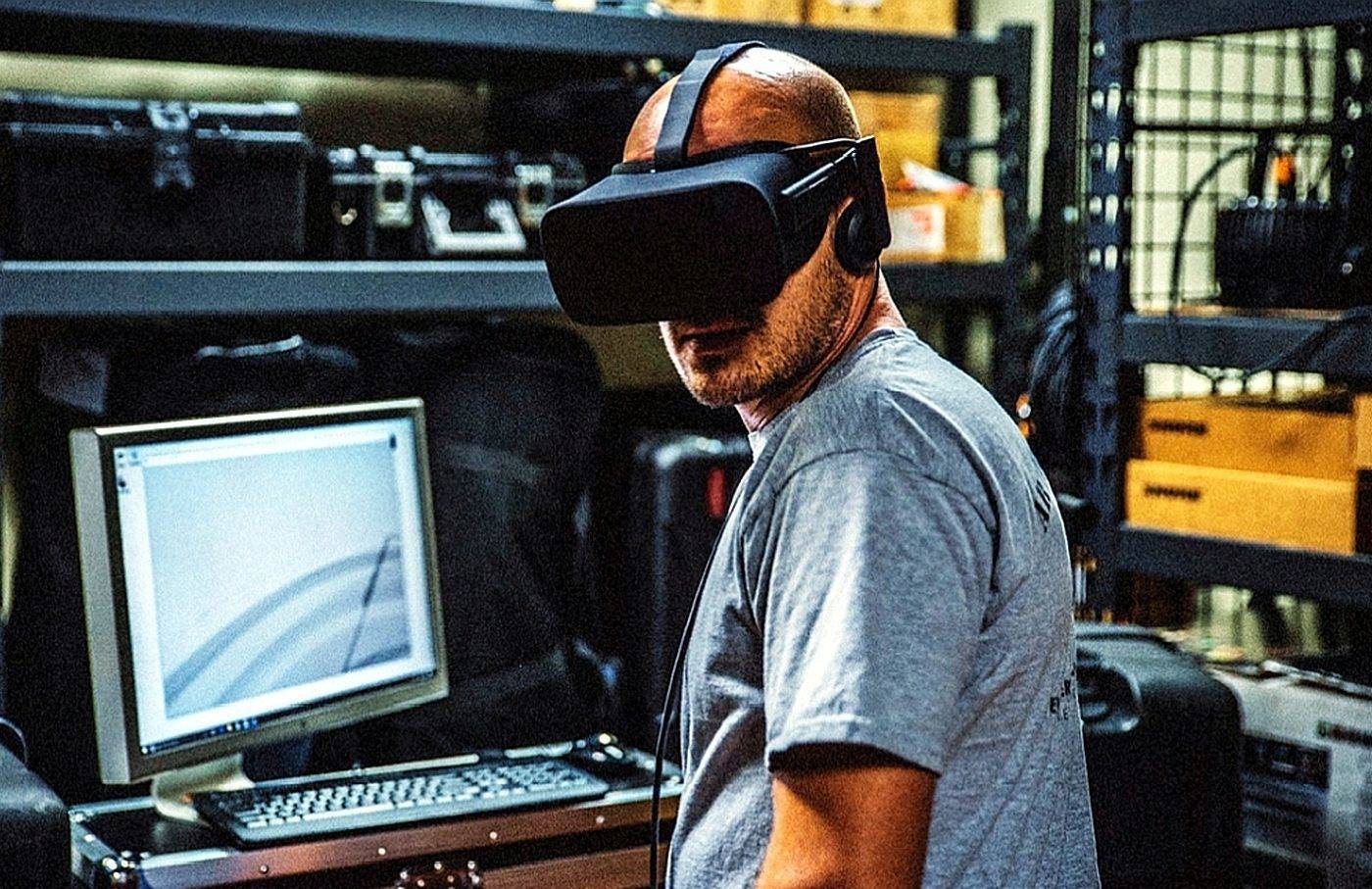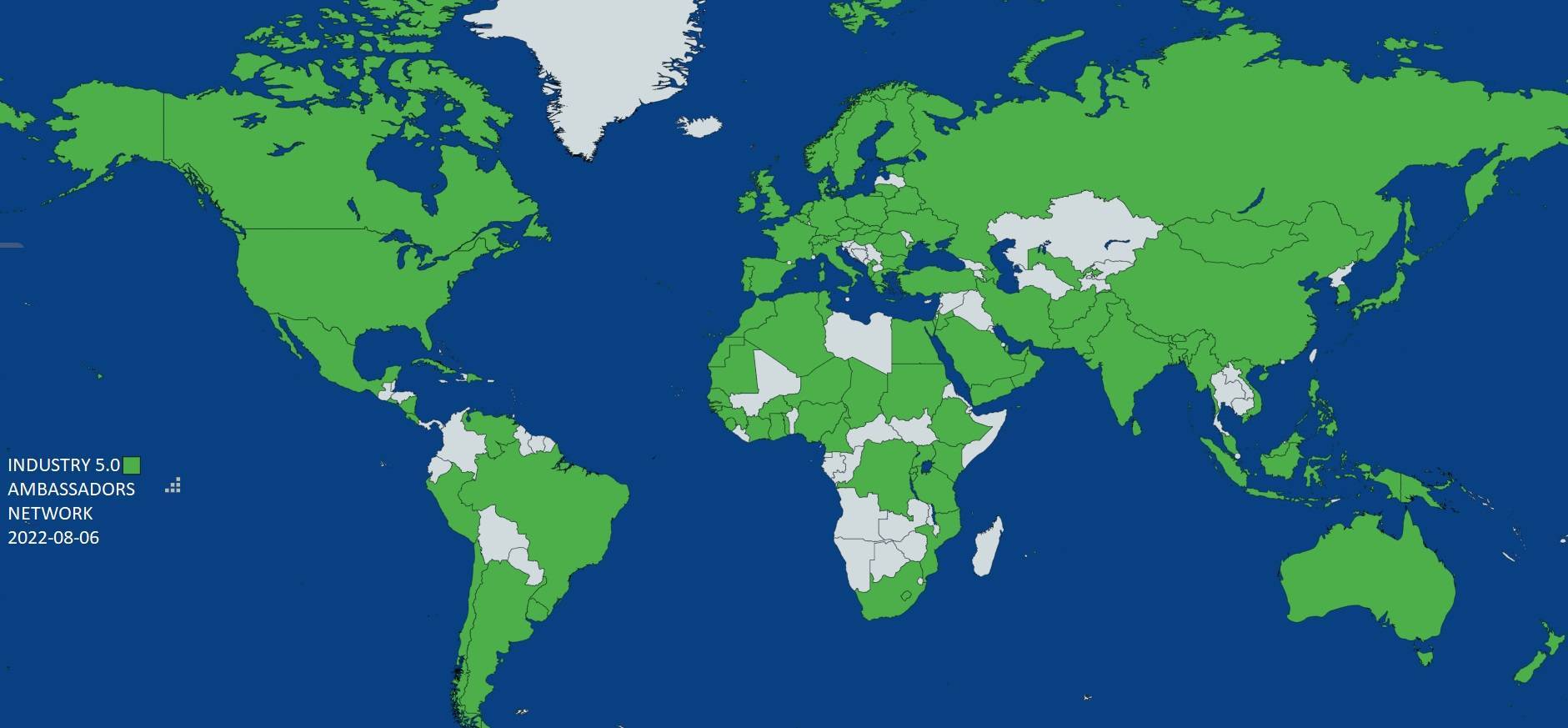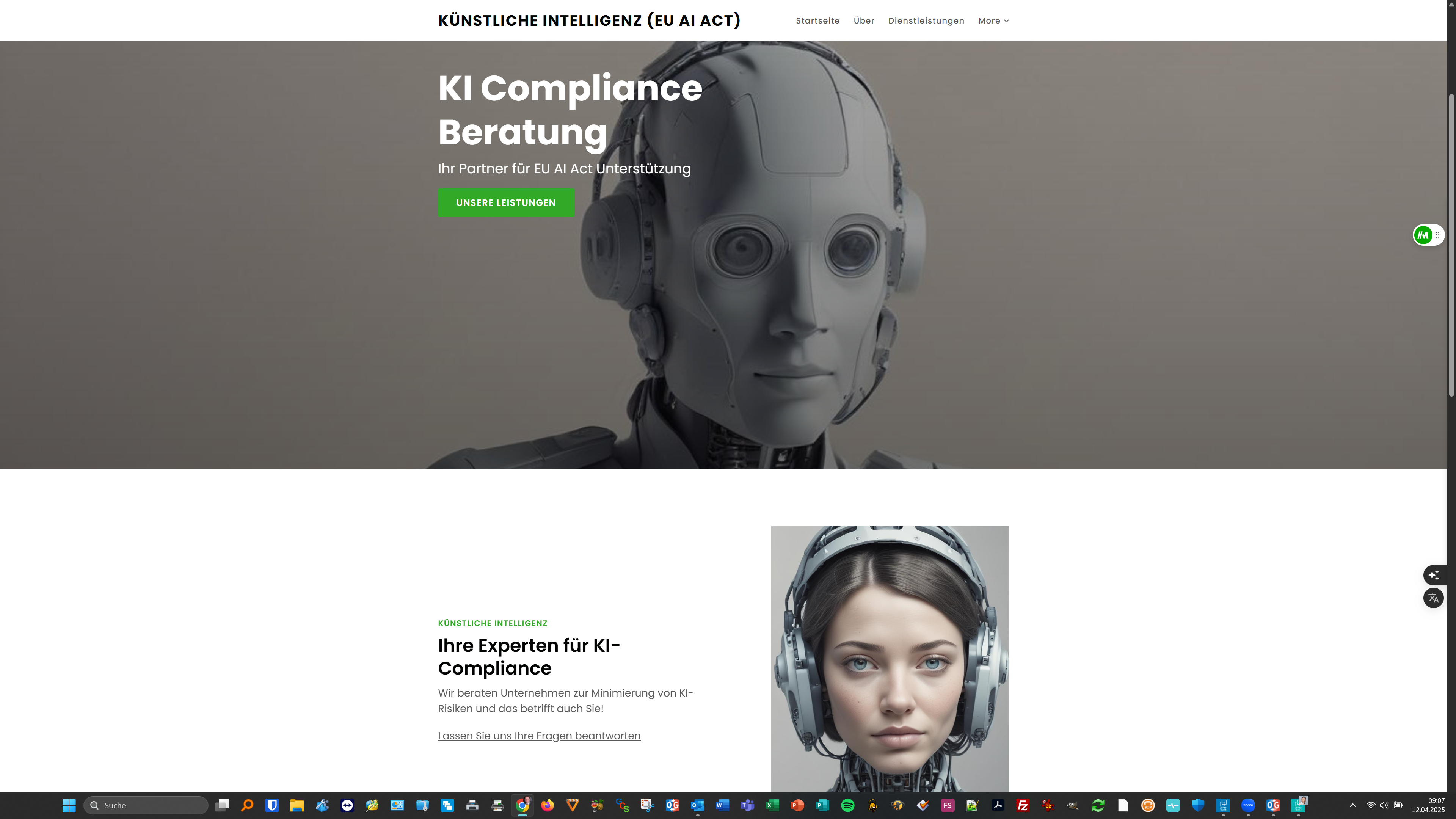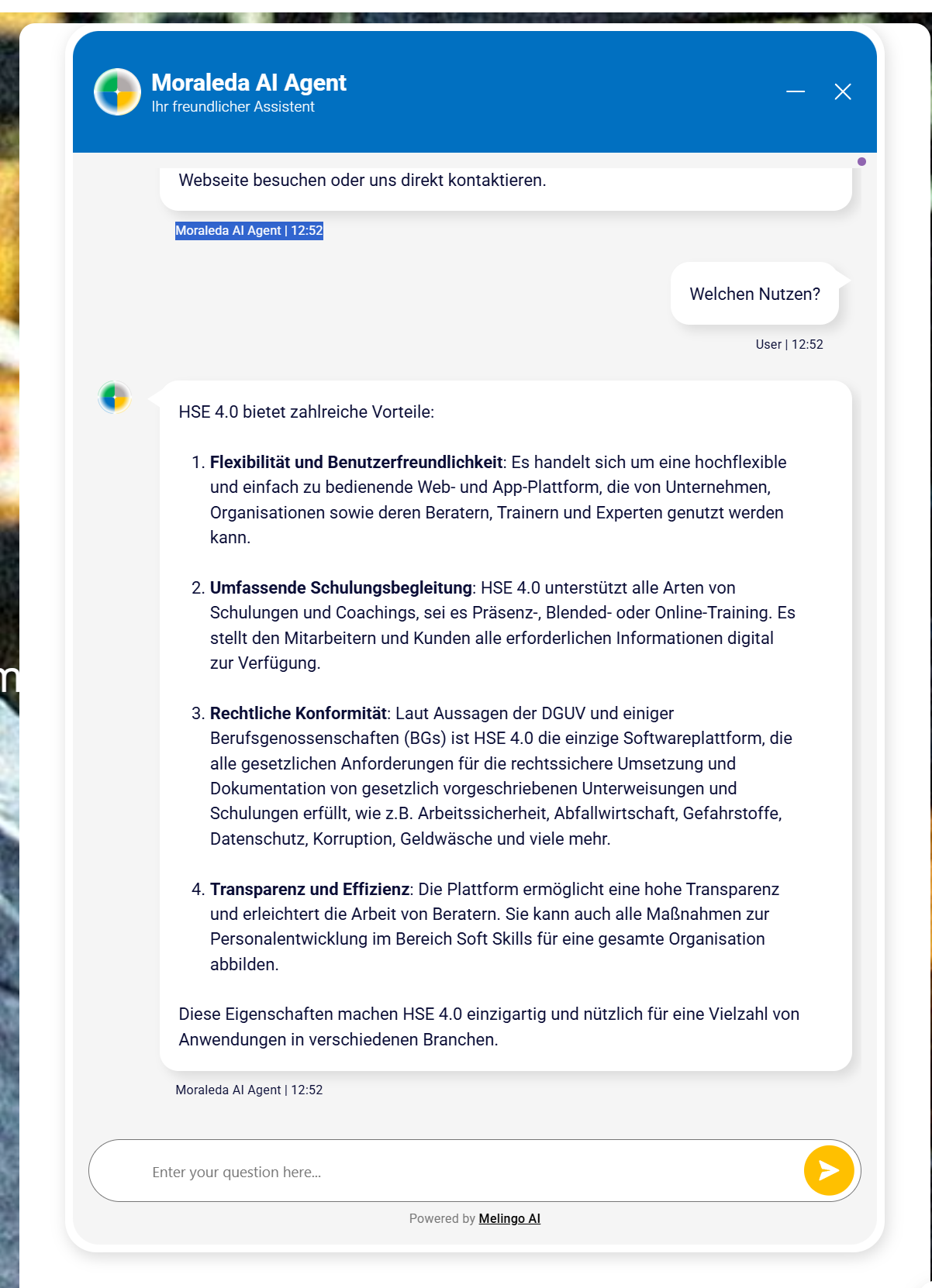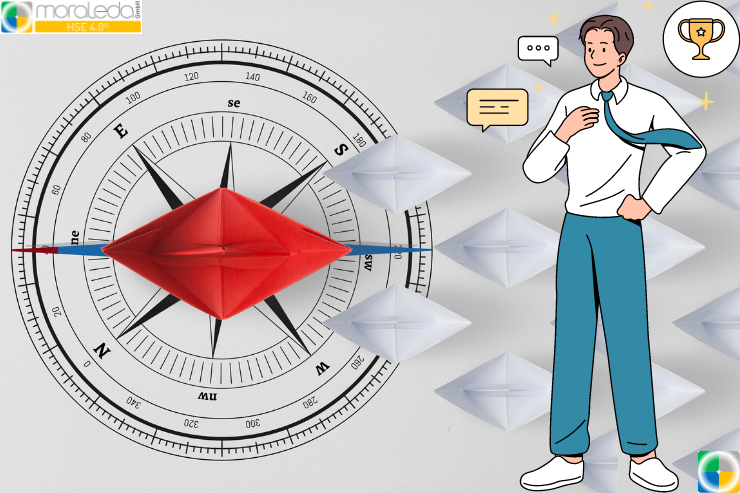General and responsibility
Occupational safety in company vehicles is of great importance. According to the DGUV regulation 70 vehicles, annual safety training is mandatory for drivers and managers. We would like to point out that this responsibility in the context of occupational safety, EHS and HSE is often not sufficiently known.
In the company fleet, it is mandatory for the driver to inspect the vehicles before starting the journey - especially if they are pool vehicles. But it's not just pool vehicles that a driver has to check regularly; permanently rented company cars also have to be checked regularly and before each journey. In addition, other people in the company are also responsible for such regular reviews.
Legal basis
Vehicles in the company are considered work equipment in accordance with paragraph 1 paragraph 1 of the Industrial Safety Ordinance (BetrSichV). This includes trucks, classic commercial vehicles or special vehicles, but also cars or bicycles used for business purposes. The “work equipment” premise means that a risk assessment of the work equipment used must be carried out as part of occupational safety. Section 5 of the Occupational Safety and Health Act (ArbSchG) states that the employer must formulate occupational safety measures based on the risk assessment and document these in accordance with Section 6 of the ArbSchG. This assessment depends on the respective area of activity. However, private vehicles used for official or business purposes are not included.
DGUV regulation 70 “Vehicles”
When assessing company vehicles, it is essential to consult DGUV regulation 70 “Vehicles” (formerly BGV D29). The regulations contained therein cover the correct handling of company vehicles and thus form the basis for driver instruction according to UVV. In addition to pool and service vehicles used for business purposes, DGUV regulation 70 also includes company cars that can be used for private purposes. Depending on the level of motorization, company bicycles such as e-bikes or Pedelecs can also exceed a maximum speed of 8 km/h.
Owner responsibility/owner liability
Owner responsibility is the general responsibility of a vehicle owner to comply with legal obligations associated with the transfer of a vehicle. The responsibility for complying with these obligations can e.g. B. in a corporate environment, this can be delegated to someone responsible for the fleet, the fleet manager.
First, however, it must be clarified who is the “owner” of the vehicle. The vehicle owner is the person who can regularly, actually and economically determine the use of the motor vehicle. Criteria that are important for this include:
Use for your own account and actual power of disposal.
“The owner of the vehicle is the person who uses the vehicle for their own account or has the corresponding power of disposal over it.” This means that you, as the owner, are responsible for the company car that has been left exclusively to you, even if the vehicle is not registered to you
Operational safety of a vehicle
In the interests of occupational safety, the fleet manager must ensure that all vehicles used on public roads are in a safe, operational condition and that regular maintenance and repairs are carried out. As a rule, he does not inspect the vehicle personally, but rather takes care of the necessary checks, appointment coordination, etc. as part of occupational health and safety. This includes all technical inspections and maintenance, as well as the necessary replacement of the spark plugs, compliance with the next inspection dates, and general inspection dates etc., as well as checking the V-belt for elasticity, tire condition and tire or seasonal wheel changes and that the equipment for proper load securing is in technically perfect condition.
In addition, the fleet manager is responsible for ensuring that drivers receive regular training on how to handle the vehicle as part of driver instruction in accordance with UVV. The instruction is also based on DGUV regulation 70 and must be carried out at least once a year. The driver learns, among other things, the basics of operational safety of the vehicle as well as the basics of correct behavior before or during the journey and in the event of an accident. However, regular instruction does not replace the examination by the driving staff, which takes place before each journey.
Test before departure
It's not just fleet managers who have to make sure that the vehicle is in a safe, operational condition. According to § 36 DGUV regulation 70, the driver is obliged to inspect the vehicle before starting work. The circumstances to be checked are listed in DGUV principle 314-002 “Inspection of vehicles by drivers”.
Short checklist for cars before setting off:
| o.k.? | |
| Availability of an operating manual | |
| External and internal visual inspection | |
| Noticeable external and internal defects or damage | |
| Condition of the rear view mirrors | |
| Condition of headlights | |
| Condition of taillights | |
| Condition of the discs | |
| Condition of the tires: tread depth and visible damage | |
| (Visual) check of tire pressure | |
| Levels of engine oil, brake and coolant | |
| Legibility of vehicle and other license plates | |
| Lighting and indicators | |
| Brake test | |
| Proper load securing devices | |
| Load properly secured | |
| Warning triangles, first aid kit and safety vest available | |
| Check the seat belts for damage | |
| Fuel levels | |
| All occupants should buckle up |
Defects or abnormalities must also be observed while driving. If defects are discovered, the driver or drivers are obliged to report these to the person responsible for the fleet and the possible subsequent driver. If serious defects are discovered before or during the journey that could endanger operational safety, the driver must immediately stop the journey and therefore the operation and park the vehicle safely in such a way that other road users are not endangered.
Be careful in winter!
Anyone traveling in winter must, in addition to the points already mentioned, check the level of antifreeze and ensure that appropriate tools are available to de-ice the windows. Depending on the situation, region and route, snow chains must also be available.
Behavior in traffic
Behavior on the highway
When accelerating on motorways, the following applies: increase the speed as quickly as possible, use the turn signal on the left and use the full length of the lane so that other drivers do not have to slow down. However, getting onto the motorway seems to be a big mystery for some drivers, as it is regularly observed that cars stop at the end of the lane.
Tip: You can drive faster on the acceleration lane than in the right lane. In this way, slower trucks in particular can be overtaken. If there is no gap in the traffic, you may continue driving on the hard shoulder for a short time if necessary to avoid accidents.
The right-hand driving requirement
In Germany, the road traffic regulations (StVO) generally require driving on the right. Driving permanently in the left lane is prohibited, even if this behavior is often observed in traffic. The middle lane can be used continuously as long as a car only drives on the right “every now and then”. This is intended to prevent accidents caused by dangerous lane changes and driving in serpentine lines. It is crucial that you do not hinder other road users. If you do this, you face a fine of up to 80 euros and one point in Flensburg.
push
Driving too closely or pushing is simply forbidden. The distance to the driver in front must be large enough to be able to keep behind him in good time if emergency braking occurs. The following applies as a guideline: At least half the speedometer reading in meters must be maintained. This is regulated even more precisely in the catalog of fines. The amount of the penalty depends on the length - or in this case: shortness - of the distance. At the same time, speed plays a role: the higher the number on the speedometer, the greater the distance must be.
Headlights flash when overtaking
According to the StVO, indicating an overtaking maneuver outside of built-up areas is actually permitted using light and sound signals. So you can even honk. However, if this is done in conjunction with driving too closely and repeatedly flashing the headlights, it is a coercion that undoubtedly leads to stress. Using the headlight flasher you can briefly switch the high beam on and off again - this creates a clearly perceptible light signal for other road users. But this can only be used before overtaking!
Zipper process
When merging two tracks, there is a, one might say, foolproof method of threading: the zipper method. However, many drivers apparently find this difficult, perhaps due to ignorance. It works like this: The lane is only changed when you are at the end of the lane you want to leave. One car is allowed to move alternately from the right lane and one from the left lane. By the way, when using the zipper method, drivers are obliged to let other drivers cut in. Find out more in our tips for the correct behavior when zipping.
Rescue lane
Forming an emergency lane when traffic is at a standstill is required by law according to the StVO and failure to do so will result in a fine of 200 euros and two points. What many people don't know is that the emergency lane has to be formed as soon as traffic comes to a standstill and not just when the emergency services come from behind with flashing lights and sirens. It's very simple: vehicles in the far left lane drive to the left, all other vehicles drive to the right. This applies regardless of how many lanes there are. The emergency lane must be formed between the left lane and the other lanes, regardless of the number of lanes. This applies as soon as you drive on motorways and expressways at walking speed. Drivers on the motorway should under no circumstances drive on the hard shoulder if emergency services vehicles need access. Likewise, every road user should ensure that, if the traffic situation is appropriate, they create an “escape lane” for the emergency services in order to give them quick access to the injured, instead of slowly driving past the scene of the accident in a curious and provocative manner.
Behavior in city traffic
Behavior in road traffic is precisely regulated when the right-of-way bends: If you stay on the right-of-way and turn accordingly, signaling is mandatory! This shows other road users that you want to continue driving on this road. If you forget to signal for a turning main road, serious accidents can occur. If you want to leave the priority road straight ahead, don't signal.
Anyone turning must indicate this in good time using the turn signal. If you want to turn right, get as far to the right as possible. If you want to turn left through the intersection, drive to the middle and stay far left so that oncoming traffic can still pass. At intersections without traffic lights, the rule is “right before left”.
There is usually a “pay attention to right of way” sign in front of every roundabout. Anyone entering the roundabout has to wait. By the way, the signposted roundabout only flashes when you exit. However, if the give way sign is missing, the rule is “right before left”, just like at an intersection. Drivers who are in the roundabout must then give way to new cars entering. In this case, the indicator must be activated when driving in and out.
Especially in busy cities, the search for a suitable parking space can get on your last nerve. However, double parking is not a suitable alternative as it is prohibited. The absolute maximum time for stopping for loading or unloading in the second row is only 3 minutes, but be careful, in many cities even stopping has been banned since 2020. Parking on sidewalks is only permitted where appropriate traffic signs indicate this. Also make sure that you always park in the direction of traffic - otherwise this can also result in a fine.
When getting out, pay attention to the traffic behind you as they will not be able to recognize your intention to open the door. This can end badly, especially for cyclists.
Cutting curves is illegal and can be punished with a fine of 80 euros and one point. In some cases, only a few centimeters are missing before a dangerous crash occurs. Unfortunately, this is often underestimated by road users. Caution is therefore advised, especially on country roads and in multi-lane, narrow traffic routes in the city.
Behavior in the event of an accident Because accidents don't happen to us every day. We rarely know what needs to be done first. Adhere to the following order and show the correct behavior in the event of an accident:
Because accidents don't happen to us every day. We rarely know what needs to be done first. Adhere to the following order and show the correct behavior in the event of an accident:
to secure the scene of an accidentto prevent subsequent accidents and warn other road users. In the case of minor damage without injuries: Move your vehicle off the road after taking photos as evidence.
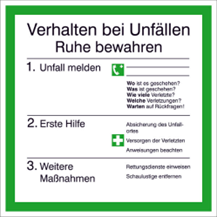 Emergency call! The Euronotruf is a toll-free, cross-border emergency call system in Europe that can be reached by dialing 112. Like 911, 112 is part of the GSM specification and can be used as an emergency number on all GSM/UMTS/LTE mobile phones worldwide.
Emergency call! The Euronotruf is a toll-free, cross-border emergency call system in Europe that can be reached by dialing 112. Like 911, 112 is part of the GSM specification and can be used as an emergency number on all GSM/UMTS/LTE mobile phones worldwide.
In order to provide precise information, there is the 5W rule.
Where did it happen?
What happened?
How many injured?
Which injuries can be identified?
Waiting for questions
Describe the accident situation and the condition of the injured as briefly and precisely as possible. Stay on the phone so you can receive instructions on how to properly care for the injured.
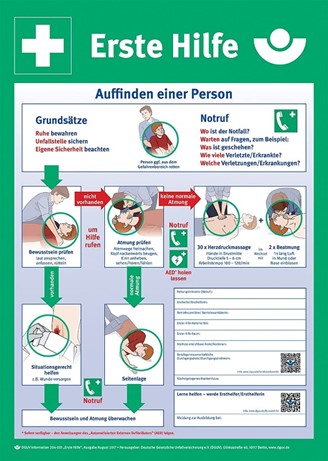 Provide first aid
Provide first aid
Pull the injured person out of the vehicle.
If the injured person is not conscious, place them in a stable side position
Remove anything from the mouth that may prevent that person from breathing
If the person is wearing a helmet, remove it by supporting the head and slowly pulling the helmet off at the top edge
If the person is not breathing, start a 100-120 heart massage on the side of the heart, pumping it 5-6 cm deep
Place the person in the recovery position
Stop bleeding
Exchange insurance information with the other parties involved. Leave the relevant information with the police if the person involved in the accident is unable to communicate.
Even if you witness an accident, you are obliged to provide first aid and help secure the scene of the accident. Even if there is no obligation to wear a safety vest in Germany, this step is definitely part of the correct behavior in the event of an accident. After all, this increases your own safety and also informs other road users of the accident situation along with the warning triangle.
Taking over a new company car
There is usually great joy when taking delivery of a new company car and these are usually picked up from the manufacturer's regional dealers and are often equipped with the latest assistants and safety features. Therefore the following applies:
- Allow time for the takeover
- Have a salesperson or technician explain the vehicle and all technical functions thoroughly to you
- Inspect the vehicle externally and note any damage and have it confirmed accordingly
- Take a test drive with the technician or salesperson and test all old and new assistance systems that are available as standard or have been ordered
This increases your security
Examination by an expert
An expert must check the vehicles used for business purposes to ensure that they are both safe for work and roadworthy. In principle, DGUV principle 314-003 (formerly: BG 916) acts as a counterpart to the principle of testing by driving personnel. There is not only information about the areas of application and the structure of the test certificates, but above all numerous checklists that every expert can use. The inspection is carried out by the expert if necessary, but also at least once a year. The results must be documented and stored in writing.
§ 57 DGUV regulation 70 further states, “For passenger cars and motorcycles, an expert inspection is deemed to have been carried out if an inspection prescribed and properly carried out by the manufacturer provides flawless results from an authorized specialist workshop, which also includes a check for safe working condition (for example with regard to the presence and condition of the high-visibility clothing and the equipment for securing loads).
The following points, among others, must be checked during an expert examination:
Belts, belt tensioners, seat fastenings functional
Lighting/light
Horn, windshield wiper, mirror
Device for securing loads/lashing eyes
Condition of glazing (damage/clear view)
Security against unauthorized use (doors, door stops, locksösser)
Condition/function of the brakes (brake pads/handbrake/brake lines)
Condition/function steering including hydraulic system
Trailer coupling (notice of permissible trailer load visible)
Source: DGUV regulation 70, DGUV principle 314-002
|
Light technology . Facilities at the front, left/right
|
|
|
Headlights (high beam, low beam) |
|
|
Marker lights* |
|
|
Direction indicators, hazard warning lights |
|
|
Fog lights* |
|
|
Outline lights* (also on trailers) |
|
|
Front reflector* |
|
|
Daytime running lights* |
|
|
Lighting equipment at the rear and sides (also on the saddle -(trailer)
|
|
|
Tail lights left/right |
|
|
Brake lights left/right |
|
|
Direction indicators left/right, hazard warning lights |
|
|
Rear fog light |
|
|
Reversing lights |
|
|
Rear reflector left/right, side* |
|
|
License plate lighting |
|
|
Outline lights* left/right |
|
|
Side marker lights* |
|
|
Parking/lane keeping lights* |
|
|
Other lighting equipment |
|
|
Yellow or blue flashing light* (all-round light) |
|
|
Flashing lights and red-white warning markings on tail lifts* |
|
|
Red and white warning markings on waste collection vehicles |
|
|
Conspicuous markings (contour markings, line markings)* |
|
|
Park-Warntafeln* |
|
|
Plates* for rear marking of heavy and long vehicles |
|
|
Work lights* |
|
|
Rims, tires and suspension |
|
|
Winter tires if required |
|
|
Rims/wheel bowls |
|
|
Wheel nuts/bolts (visual inspection) |
|
|
Tire condition (damage, tread depth, running pattern, air pressure) |
|
|
Valve caps |
|
|
Foreign body (also twin tires) |
|
|
Suspension (visual inspection) |
|
|
Brake system |
|
|
Brake fluid level |
|
|
tightness |
|
|
ABV/ABS control device |
|
|
Air tank, drainage, air dryer |
|
|
Frost protector (winter operation) |
|
|
Air filling time, pressure warning display |
|
|
brake test |
|
|
Parking brake transmission device |
|
|
Breakaway cable overrun brake |
|
|
Engine and drive |
|
|
Fuel supply, additives |
|
|
Engine oil level, coolant level |
|
|
Tightness of the engine and fuel supply |
|
|
V-belt |
|
|
Lenkanlage |
|
|
steering play |
|
|
Smooth movement/noises |
|
|
Power/hydraulic steering oil level |
|
|
Driver assistance systems (FAS) |
|
|
switched on and functional |
|
|
FAS control device |
|
|
cab |
|
|
horn |
|
|
Indicator lights |
|
|
All mirrors outside and inside |
|
|
Windshield wipers, headlight washers, windshield washers, ventilation systems |
|
|
Field of vision clear, windows undamaged, ice-free, cleaned inside and out |
|
|
Steering wheel, seats, headrests, seat belts |
|
|
Securing berths |
|
|
Floor mats / carpets / pedal paths |
|
|
EC control device, record sheet, driver card* |
|
|
Structure/frame (also (saddle) trailer
|
|
|
official license plates and plates |
|
|
Climbs, handholds, standing surfaces, railings |
|
|
Side walls, doors, stanchions, flaps, tarpaulins, hoods |
|
|
Body parts in driving position & secured
|
|
|
The outside of the superstructure and vehicle frame is free of any cargo residue |
|
|
Roofs free of water, snow and ice |
|
|
Underside of vehicle free of foreign objects |
|
|
load and Load securing
|
|
|
Load securing devices (e.g. lashing points) |
|
|
Load distribution (e.g. take axle loads into account) |
|
|
Load securing |
|
|
Fastening swap bodies, containers, tipping and skip containers |
|
|
double securing swap body supports |
|
|
Spare wheel storage |
|
|
Shut-off devices |
|
|
Locking devices |
|
|
saddle – and trailer operation, clutch
|
|
|
Protective caps |
|
|
before coupling |
|
|
Fangmaul/Zuggabel/ Höheneinstelleinrichtung |
|
|
after coupling and during operation |
|
|
Clutch closed and secured |
|
|
electrical connection, ABV/ABS plug connection |
|
|
Supply and brake line |
|
|
breakaway cable |
|
|
equipment |
|
|
Wheel chock(s)* |
|
|
Aids for securing loads |
|
|
leaning ladder* |
|
|
Warning triangle, warning light, hand lamp (omnibus) |
|
|
Fire extinguisher (bus, dangerous goods vehicle) |
|
|
First aid kit |
|
|
Equipment for the transport of dangerous goods, accident information sheets, placards |
|
|
High visibility clothing |
|
|
Operating instructions and operating instructions |
|
|
Winter operation (if required) |
|
|
Snow chains, traction aids |
|
|
Aids for window de-icing (ice scraper) |
|
|
Shovel, grit, broom |
|


